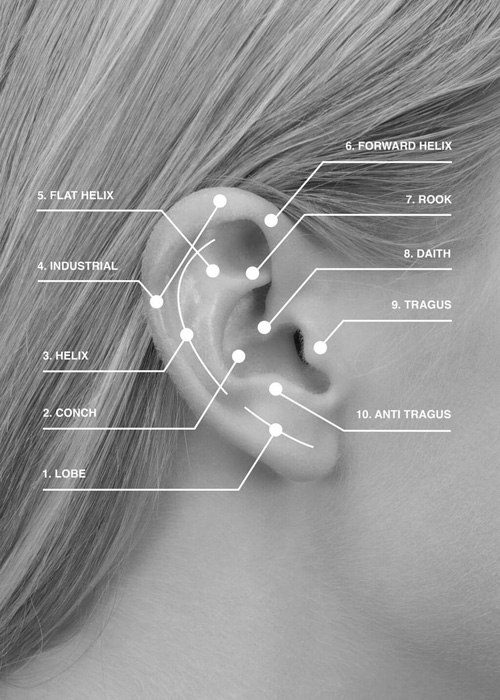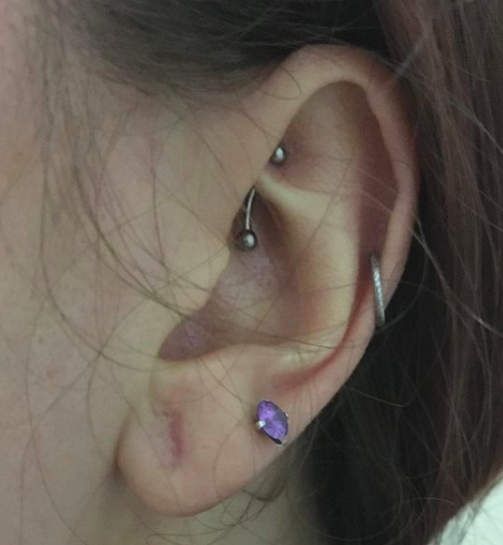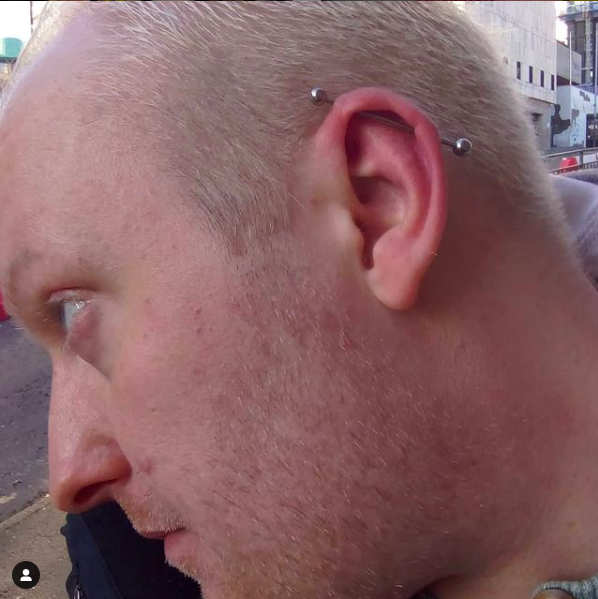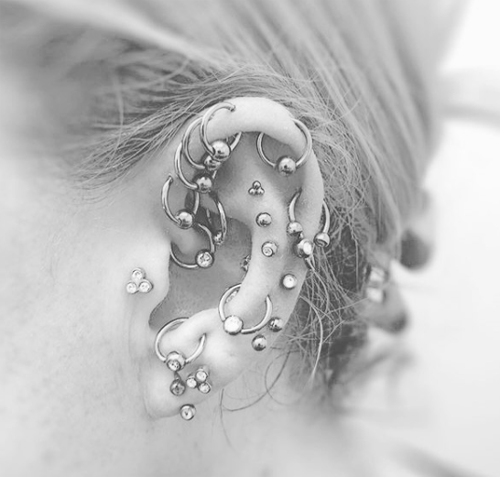Types of Ear Piercings
Out of all the fashion trends in the world, ear piercings are one of the few that will pretty much never go out of style. Because let’s face it, who doesn’t love a little bit of ear bling? Not only do they help you express yourself in many forms, but they also suit pretty much any style you may be rocking!
Years ago, you may have caught most people wearing a simple piercing in each ear. These days, however, that’s just not the case. So much so, in fact, that it’s not unusual to see people flashing 5 and up piercings in each! And we LOVE it.
A Guide to Piercing Positions

Lobe Piercing
Possibly the most traditional of all, the lobe piercing is… well, in the earlobe. As your lobe is the fleshiest part of the ear, it’s certainly one of the easiest and least painful to get. The healing time is also the quickest! As it only lasts about 6 weeks.
Forward Helix Piercing
There’s the forward helix piercing and the regular helix piercing, and the difference between the two is the location. The forward helix piercing sits lower on the ear, nearer to the root of your helix. The most popular jewellery used for a forward helix is most often a stud.
Daith Piercing
A Daith piercing is basically a hoop that snugs the cartilage found inside your ear. This is currently a very popular piercing amongst piercing fans, as it’s surprisingly versatile and suits most people! It can even sometimes help to soothe anxiety-related migraines!

Orbital Piercing
An orbital piercing is any two piercings that are connected by one piece of jewellery. More often than not it’s done in the lobe placement of the ear.
Helix Piercing
There’s no doubt about it, helix piercings are both stylish and spunky! It’s a cartilage piercing that sits on the upper section of the ear. It also ranks low on the pain scale (woohoo!) as it’s done using a teeny needle.
Industrial Piercing
An industrial piercing (also known as a scaffold, a bar or a construction piercing, is a DOUBLE perforation of your upper ear cartilage. This is great if you’re looking for something a little different, an eye-catching piercing. It’s certainly one of the most unique out there right now!

Tragus Piercing
The tragus is another very versatile piercing and looks great with a wide variety of jewellery styles. Bonus - it's another cartilage piercing, so it's not too painful either!
Anti-Tragus Piercing
The anti-tragus is, obviously, similar to the tragus piercing, despite its confusing name. The main difference is that it’s one just above your lobe.
Cartilage Piercing
Of course, if a bog-standard piercing isn’t enough, why not go all out with a cartilage piercing? This kind of piercing is a popular choice for all genders. For most people, getting a cartilage piercing doesn’t hurt much at all - however, the hard part starts two weeks after you get it done because that’s when you may start to experience some mild pain and discomfort.

After Care
Just as with tattoos, ear-piercing aftercare is incredibly important. Your ears may bleed a little after getting a piercing, but don’t panic, as this is entirely normal. Other things to consider when it comes to aftercare is how you clean your piercing and how long it will take to heal.
Each piercing location has a different healing time, and it also depends on your own body too. A conch piercing may take around 3 - 9 months to heal fully, while earlobe piercings may take just 1 - 2 months.
Your piercer will discuss an aftercare plan with you specific to you and your piercing including a written aftercare sheet and all relevant information you will need!

